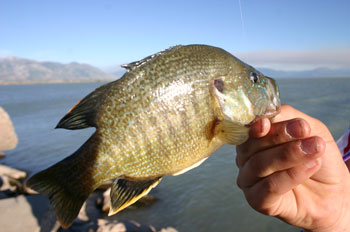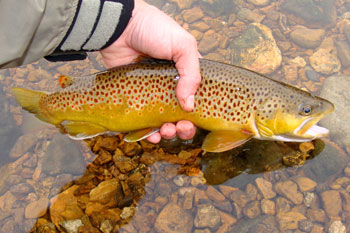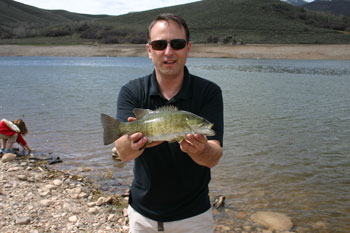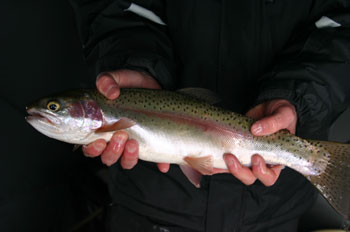This article may include affiliate links. If you click a link and make a purchase, Utah Outdoor Activities may receive a small commission at no extra cost to you. We only recommend products or services we personally use. FTC Affiliate Disclosure.
If you are searching for Utah fishing limits, we highly recommend reviewing the latest Utah fishing guide book. In this article we are going to discuss a topic that seems to cause a little controversy on many Utah fishing forums. When it comes to the fishing community there are many different viewpoints on whether or not you should harvest the fish you catch. So, the question is, should you keep the fish you catch and is keeping fish going to hurt the resource?

Should you keep the fish you catch?
There are many different factors to look at in order to answer this question. The first one, of course, is the current fishing regulations. Does the body of water you are fishing have special regulations, or slot limits? These regulations will determine whether or not you will be keeping any of your catch. Another factor to consider is the type of fishing you are doing. For example, are you bait fishing, fly fishing, or spinner fishing? Your method of fishing will also play an important role in whether or not you will be releasing or keeping your fish.
Bait Fishing Vs Artificial:
Fishing with artificial baits such as lures, flies, or spinners will allow you to catch and release more fish. In most cases when you catch a fish using artificial baits the fish are hooked in the lips. This allows for easy removal of the hook and the survival rate of the released fish greatly improves. If you are bait fishing, the fish generally swallows the bait or gets hooked deep in the mouth making it more difficult to remove the hook.
 When this happens, cutting the line is the only way to insure the fish has a chance to survive. If bait fishing on waters with special regulations such as Strawberry Reservoir you may find yourself cutting the line more often in order to release those fish not within the set slot limits.
When this happens, cutting the line is the only way to insure the fish has a chance to survive. If bait fishing on waters with special regulations such as Strawberry Reservoir you may find yourself cutting the line more often in order to release those fish not within the set slot limits.
Different species of fish:
Viewpoints on this topic also differ depending on the species of fish that is kept for the BBQ. Those who post pictures of a Brown Trout on the kitchen counter seem to get a lot of attention and backlash; however buckets full of White Bass get very little attention. Is keeping a Brown Trout every once in a while going to hurt the resource? Well, this leads into the next question.
Is keeping fish going to hurt the resource?

We feel the DWR (Division of Wild Resources) does a great job of regulating Utah's waters. Are they perfect? Absolutely not, and there are times they have not been successful with their management choices. However, when certain regulations are put in place, we feel they are the best choice based on studies, public input, and information collected about a particular body of water. So, if the current regulations say you can keep 4 trout, well, keeping 4 trout should not hurt the resource. If the fishing regulations state you can keep 2 Brown Trout under 15 inches, then this should not hurt the resource.
There have been a few cases over the last few years when not keeping a few fish has actually damaged the resource with stunted growth, as high populations of fish compete for food. Now, does this mean we are telling you to keep a limit of fish on every outing? No, and this brings us to the final thought on this topic.
Selective Harvesting:
Selective harvesting is something that we practice on every fishing outing within the current fishing regulations of course. Catching and keeping a few for the table and releasing some to be caught another day. This has been a proven sustainable method that captures the benefits of “catch and release” and the benefits of “catch and keep”.

Our goal is never about catching a full limit of fish to bring home, but to hopefully catch a few fish and enjoy the experience of getting outdoors. Also, any fish kept for the table (within the current fishing regulations) are kept in quantities that can be used as soon as possible and not thrown in the freezer and forgotten about. When it comes to fish, nothing replaces a freshly caught one, smoked in the smoker or cooked on the barbeque.
So, keep a few for dinner, but also remember the benefits of allowing some to return to the depths to be caught another day.
Disclaimer:
Over the last several years, Utah’s waters have been altered by what we like to call the”bucket biologist”. Several different species of fish have been illegally planted in several different reservoirs and lakes. It’s important to keep up on the fishing guidebook to insure you don’t release any evasive species you happen to catch. Here are a few examples:

Deer Creek - No limit on white bass or black bullhead catfish. Anglers must not release any white bass or black bullhead catfish they catch. All white bass or black bullhead catfish must be immediately killed.
Echo Reservoir - No limit for walleye. Anglers must not release any walleye they catch. All walleye must be immediately killed.
Utah Lake - No limit on northern pike. Anglers must not release any northern pike they catch. All northern pike must be immediately killed.
It’s up to you to know and follow the rules outlined in the Utah Fishing Guide Book.
We hope you enjoyed this information. For more outdoor activities, please connect with us on YouTube, Facebook and Instagram. Help us keep this site up and running by visiting our online store which features outdoor themed gifts, decor and more. Thank you for visiting and for your ongoing support!